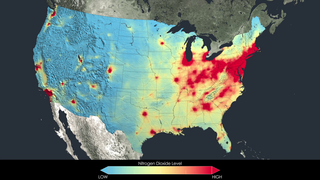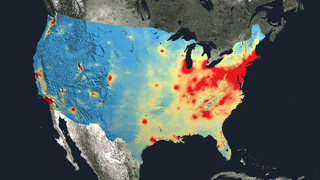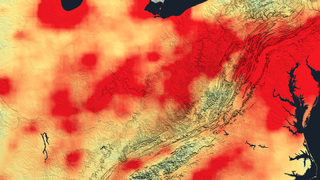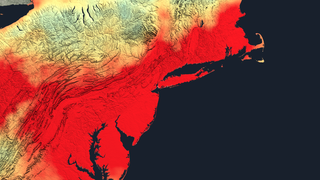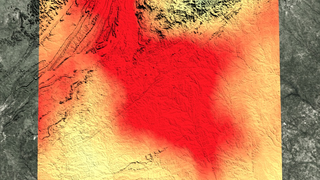Nitrogen Dioxide Reduction Across the Northeast U.S.
Nitrogen dioxide can impact the respiratory system, and it also contributes to the formation of other pollutants including ground-level ozone and particulates. The gas is produced primarily during the combustion of gasoline in vehicle engines and coal in power plants. Air pollution has decreased even though population and the number of cars on the roads have increased. The shift is the result of regulations, technology improvements and economic changes, scientists say.
This visualization shows tropospheric column concentrations of nitrogen dioxide as detected by the Ozone Monitoring Instrument on NASA's Aura satellite, averaged yearly from 2005-2011. Blue and green denote lower concentrations and orange and red areas denote higher concentrations, ranging from 1e+15 to 5e+15 molecules per square centimeter, respectively.
Along the U.S. East Coast, the relatively flat landscape means almost everyone is downwind of someone else. If wind moves up from the southwest to northeast along the Eastern Seaboard, a so-called "river of pollution" builds up as pollution passes from one city to the next.
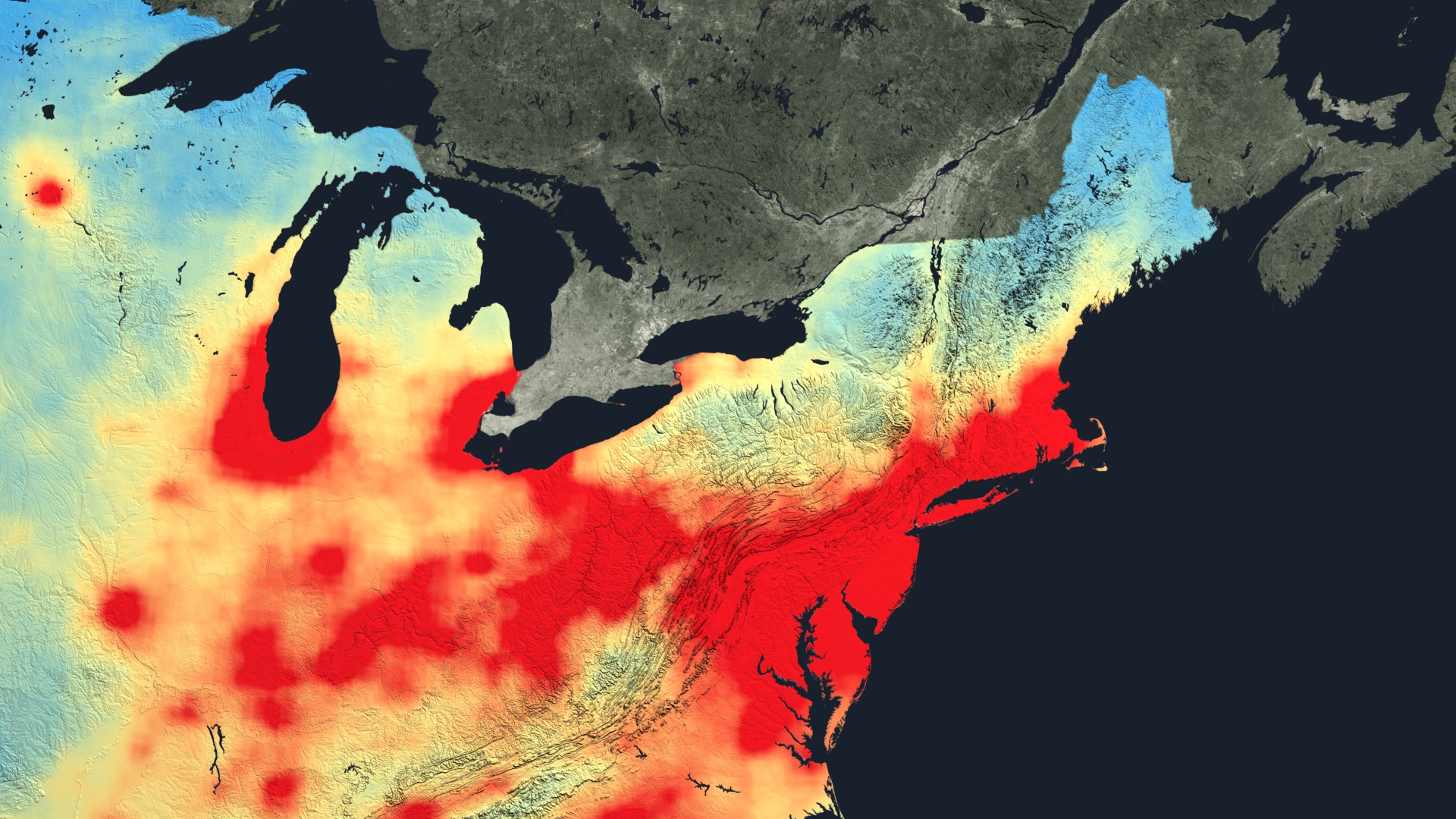
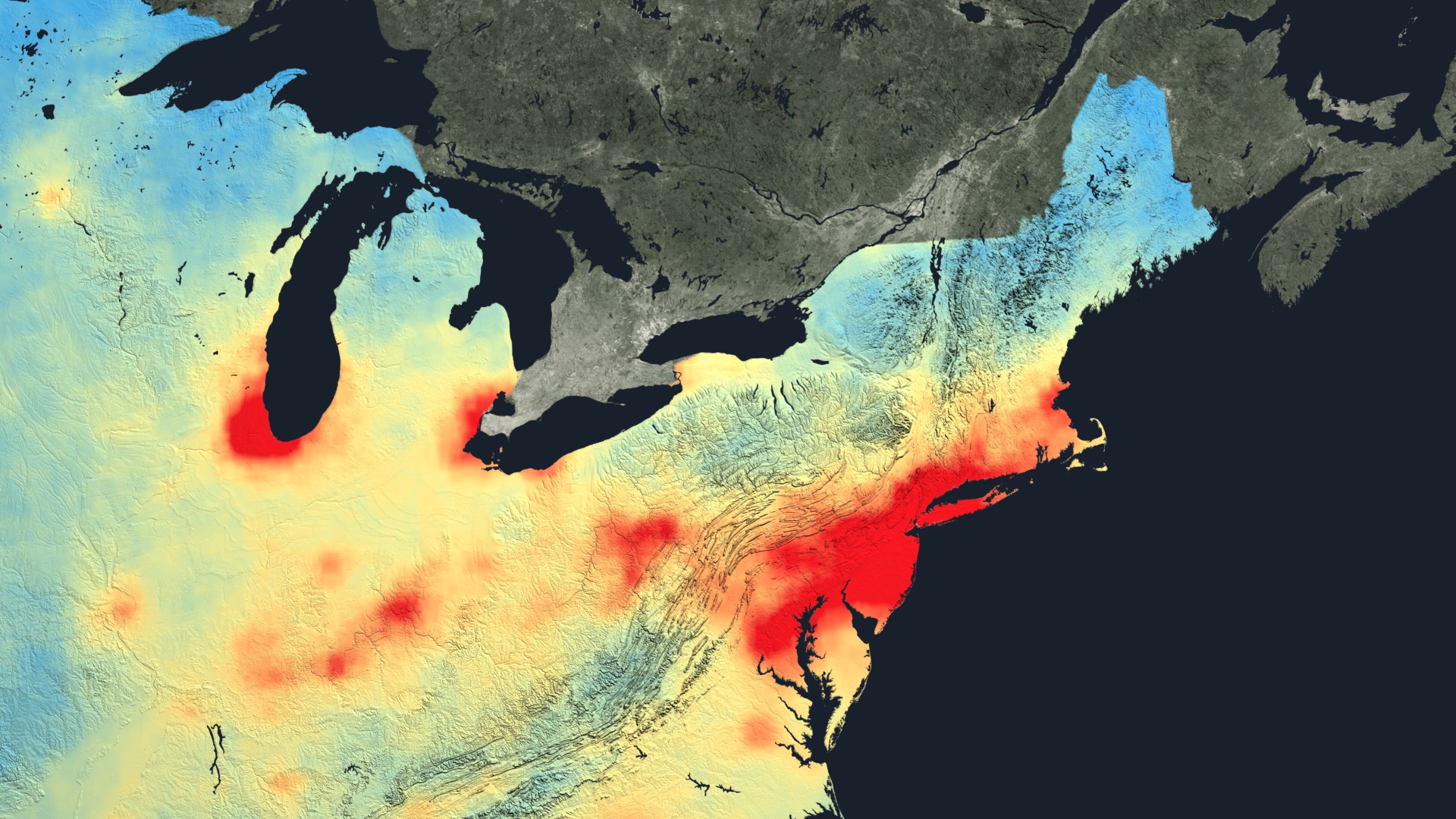
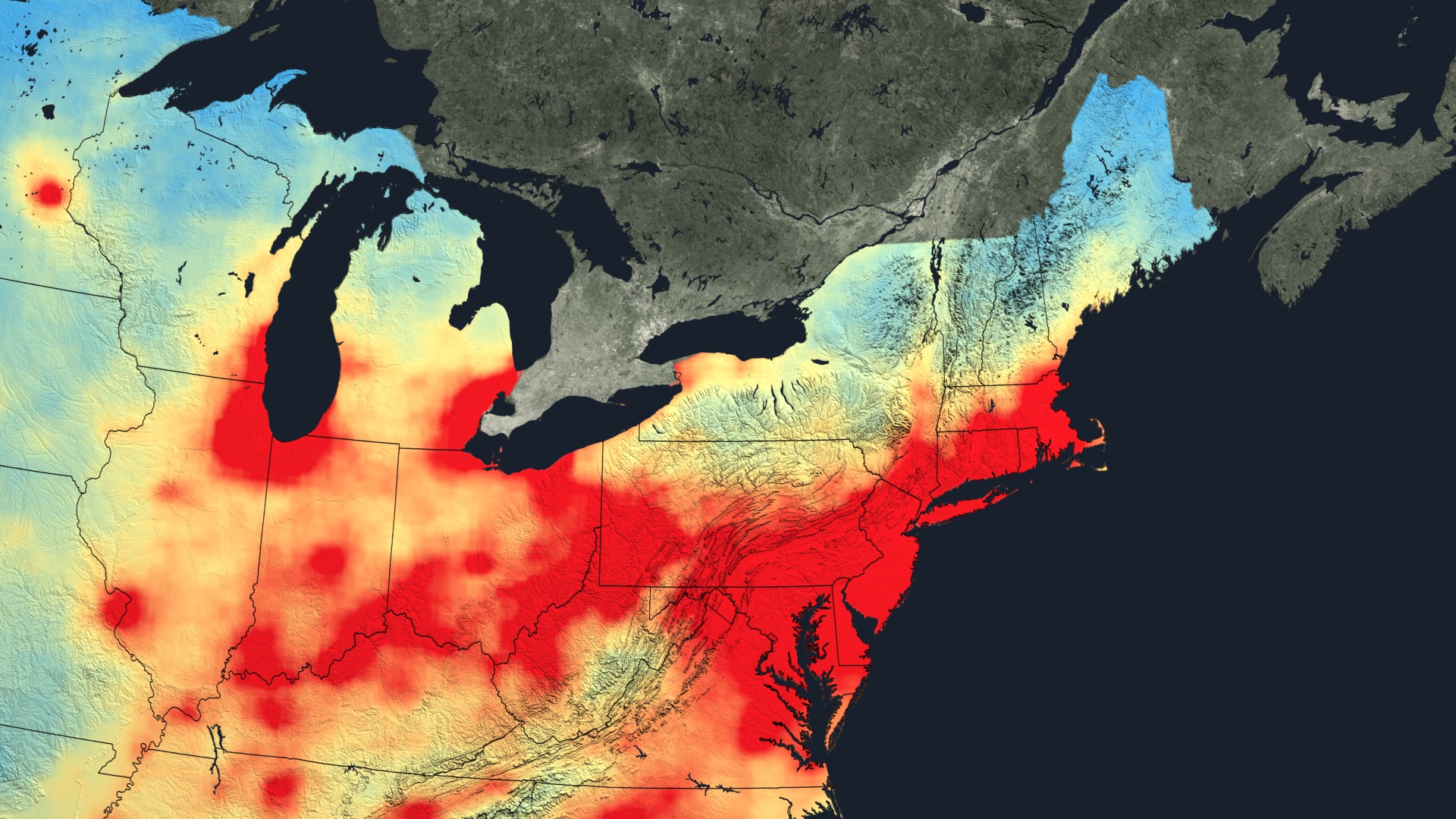
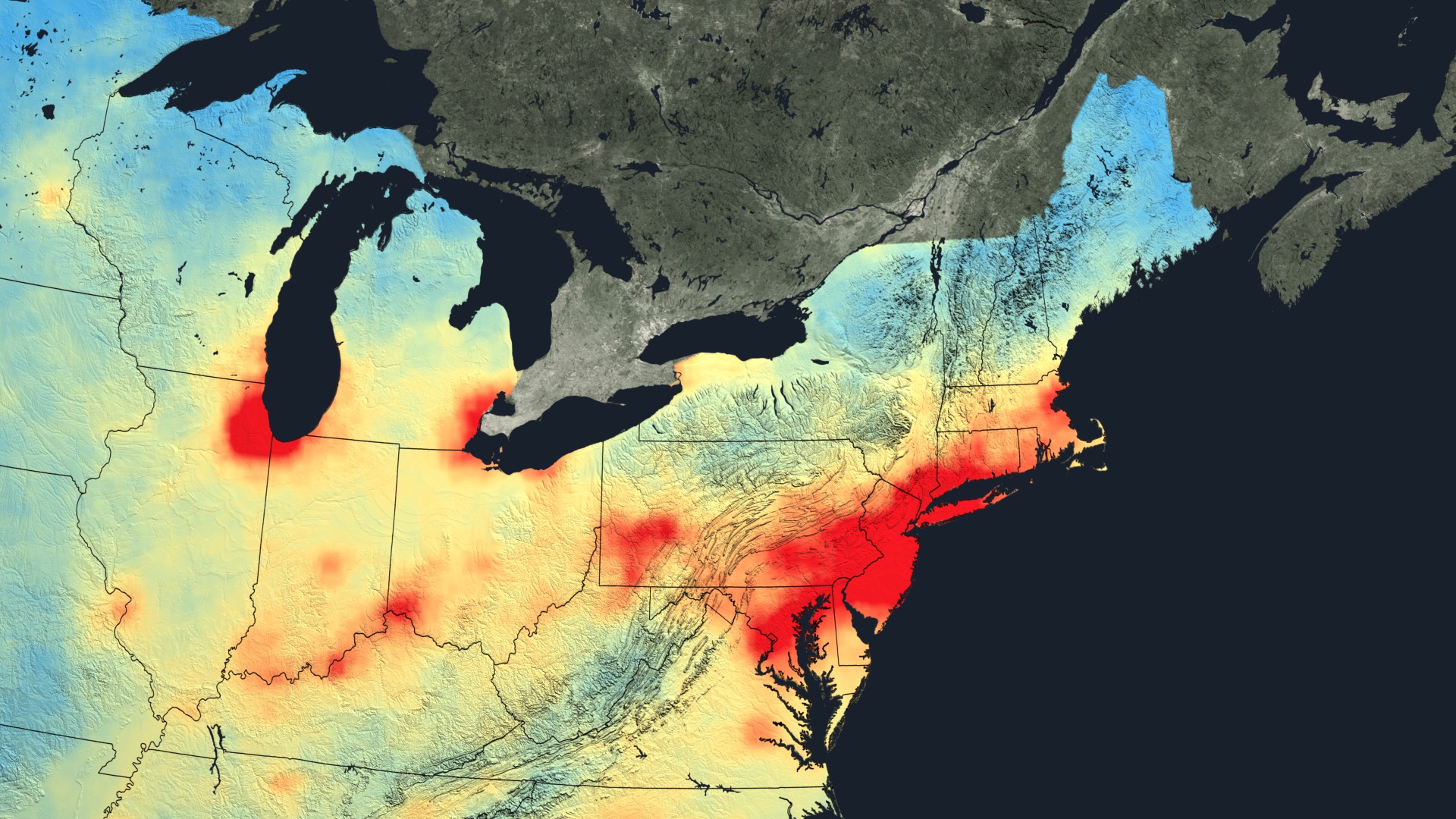
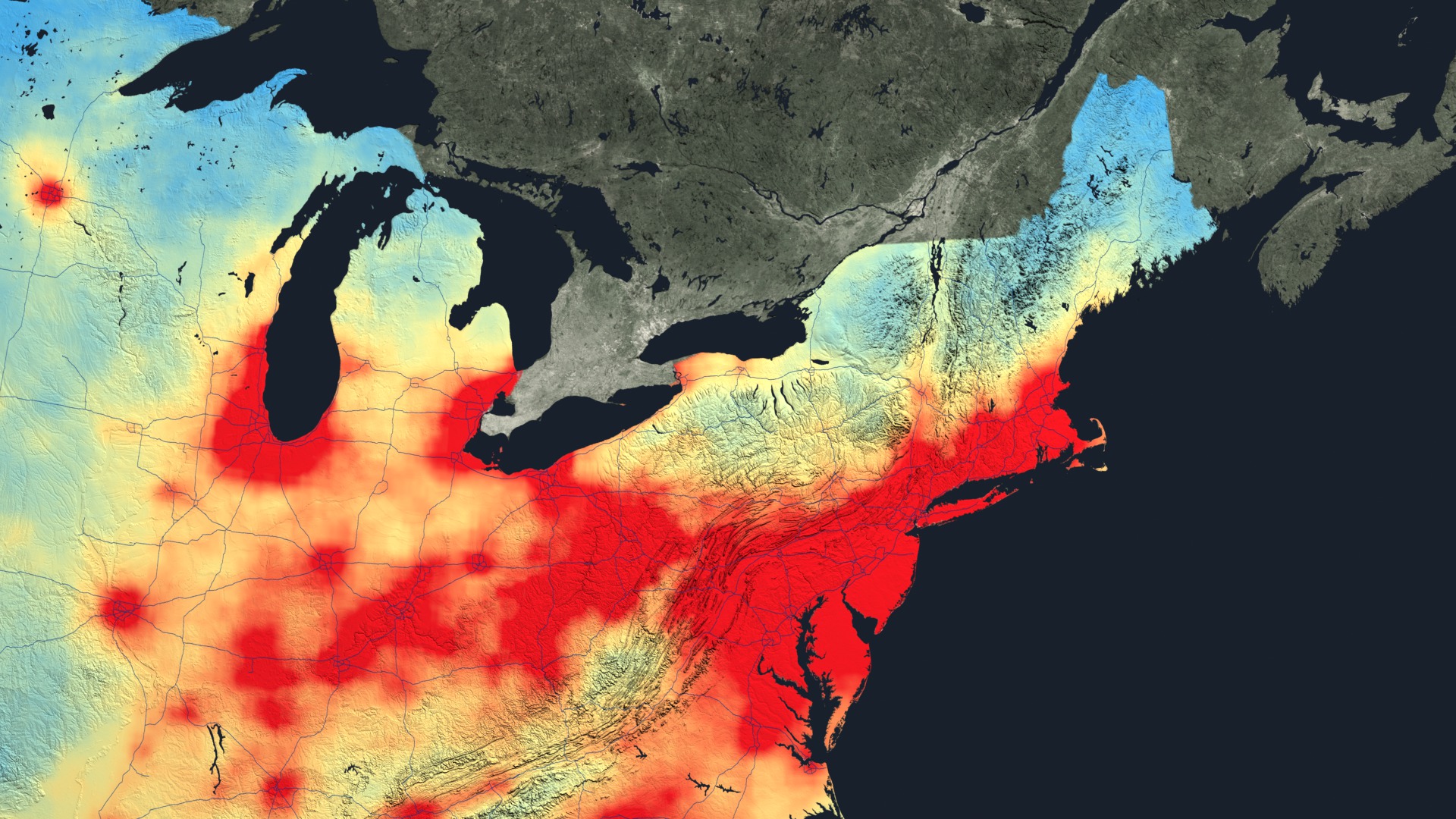
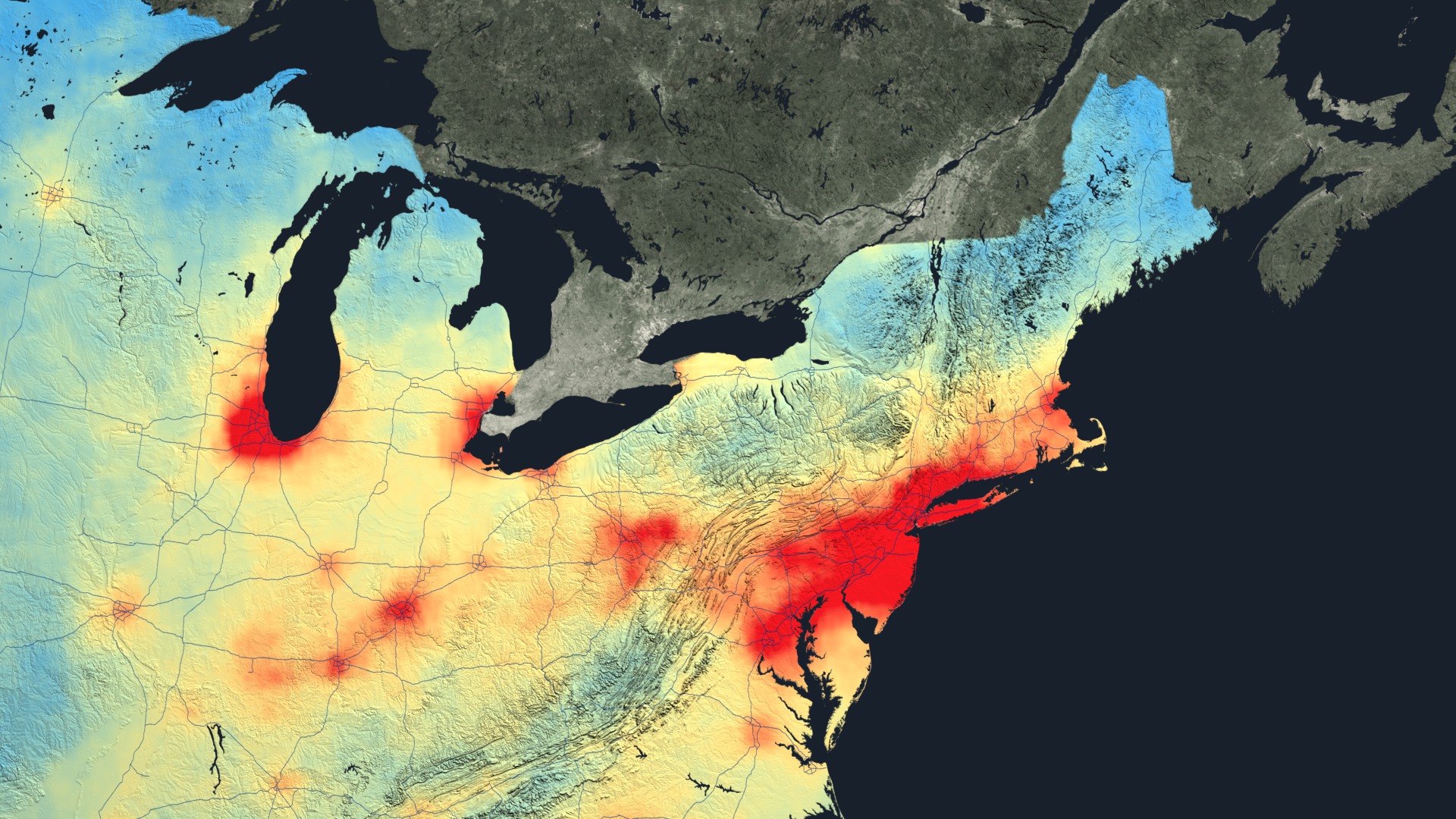
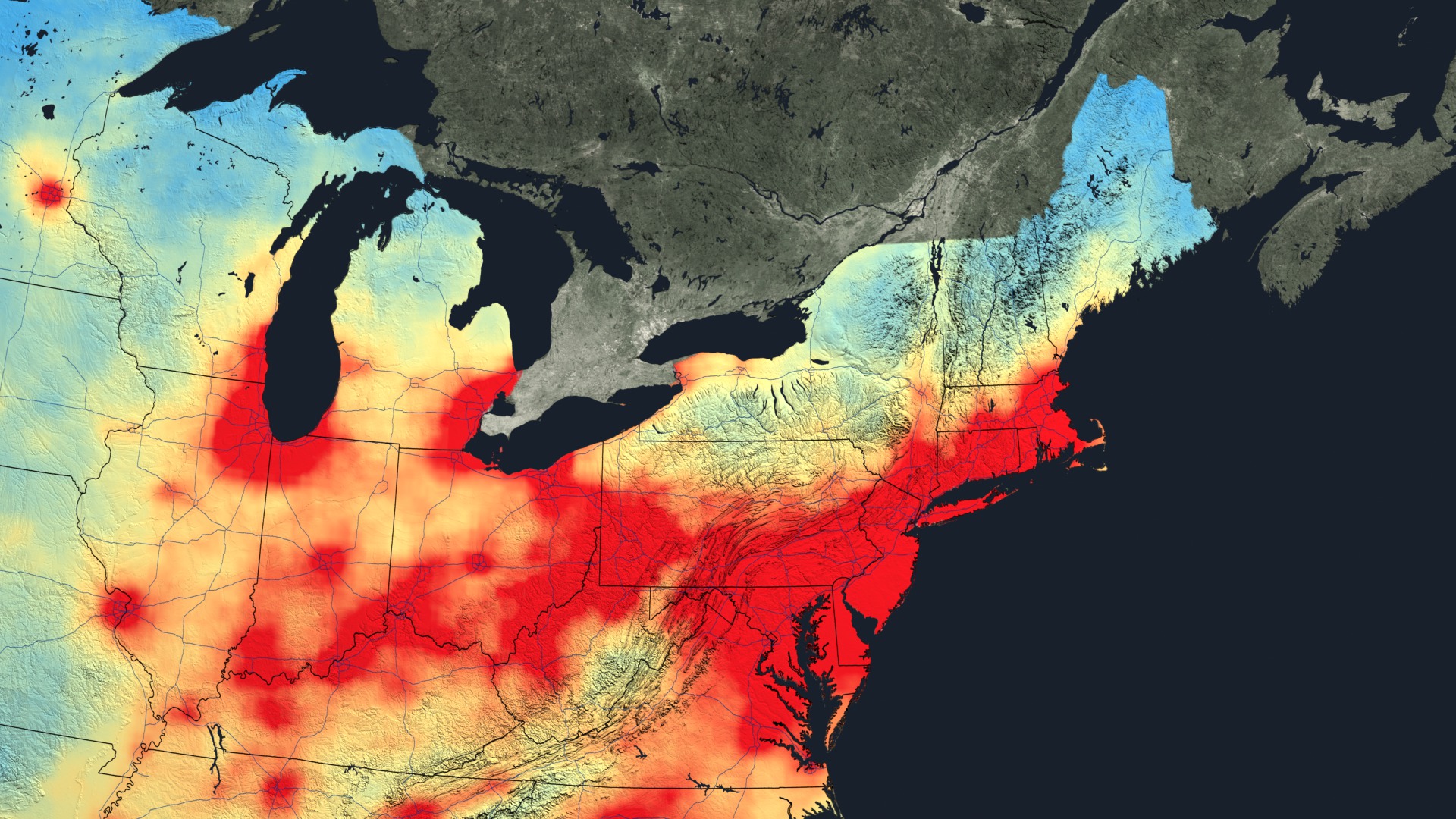
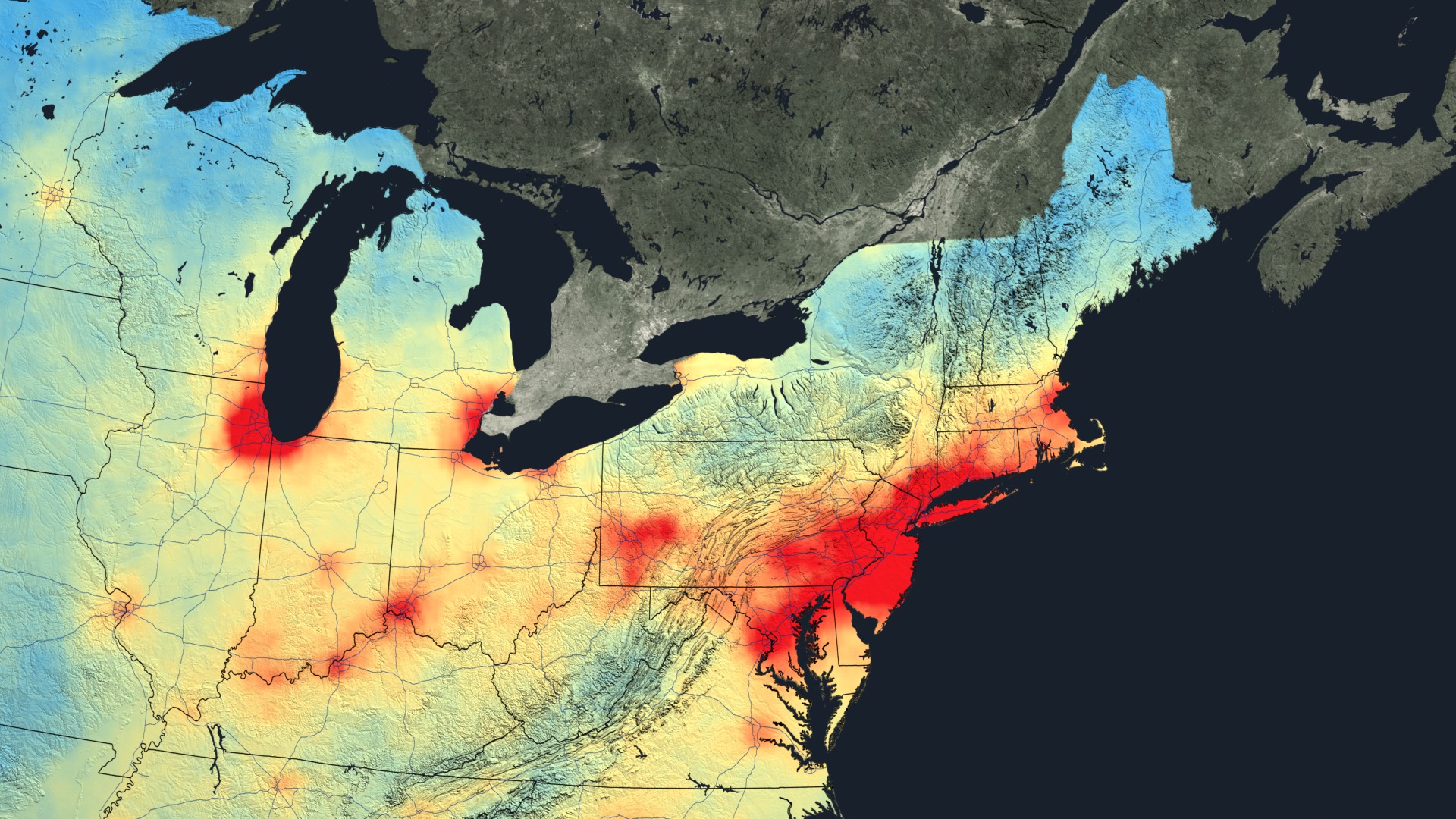

Related
Credits
Kayvon Sharghi (USRA): Producer
Bryan Duncan (NASA/GSFC): Scientist
Lok Lamsal (USRA): Scientist
Yasuko Yoshida (SSAI): Scientist
Aaron E. Lepsch (ADNET Systems, Inc.): Project Support
Kathryn Hansen (Wyle Information Systems): Writer
NASA Goddard's Scientific Visualization Studio
